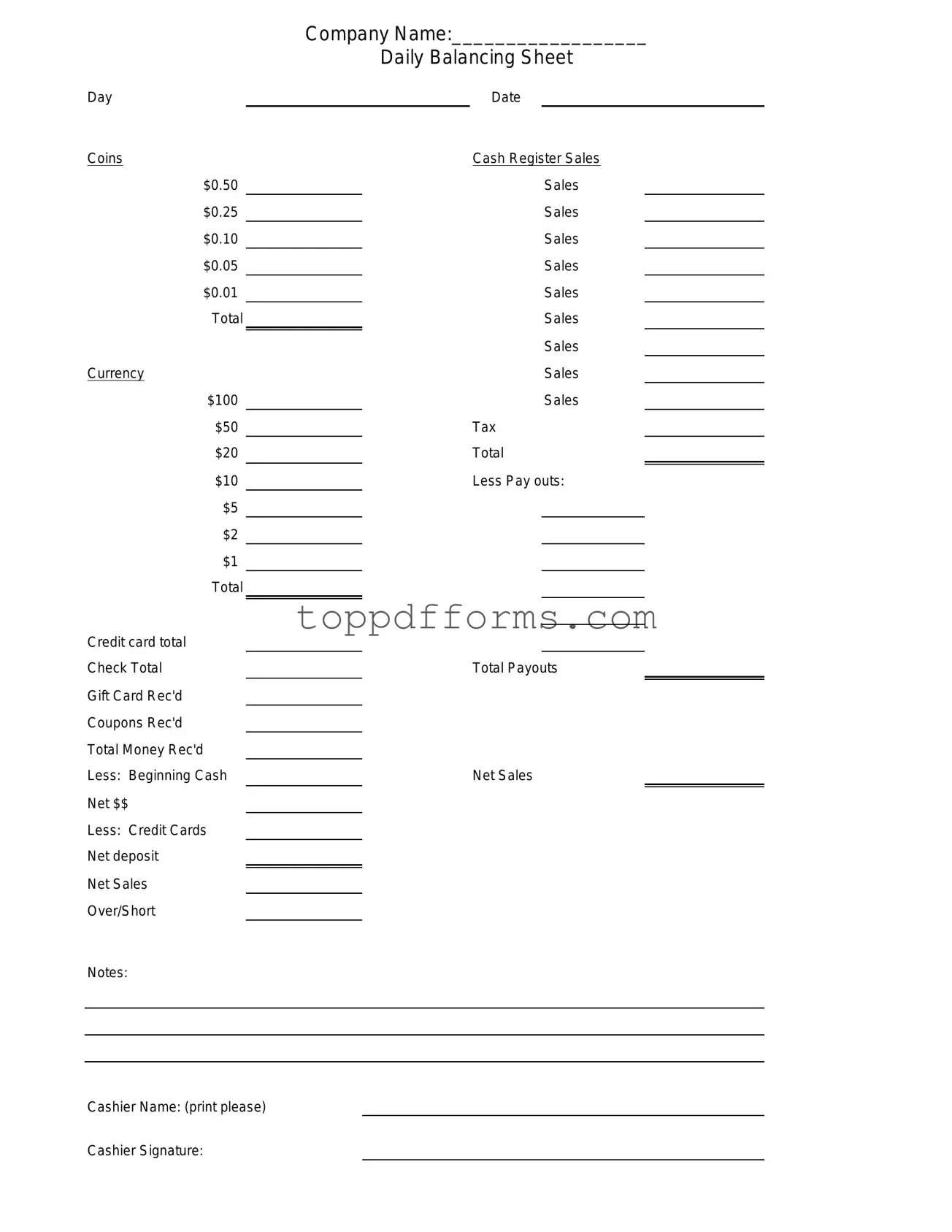What is a Cash Drawer Count Sheet?
A Cash Drawer Count Sheet is a document used by businesses to track the amount of cash in their cash drawers at the end of a shift or business day. This form helps ensure that the cash on hand matches the sales recorded in the point-of-sale system. By providing a clear record, it aids in identifying discrepancies, preventing theft, and maintaining accurate financial records.
Why is it important to use a Cash Drawer Count Sheet?
Using a Cash Drawer Count Sheet is crucial for several reasons. First, it helps maintain accountability among cash-handling employees. Regularly counting cash and documenting it reduces the risk of errors and fraud. Additionally, it provides a clear audit trail, which is essential for financial transparency and can be invaluable during tax season or audits.
How do I fill out a Cash Drawer Count Sheet?
Filling out a Cash Drawer Count Sheet typically involves a few straightforward steps. Begin by entering the date and the name of the person conducting the count. Next, count the cash in the drawer, including bills and coins, and record each denomination separately. Finally, total the amounts and ensure that the sum matches the expected cash based on sales records. This process should be done diligently to ensure accuracy.
What should I do if there is a discrepancy in the cash count?
If you find a discrepancy between the counted cash and the expected amount, it is essential to investigate promptly. Start by double-checking the cash count and reviewing the sales records for the day. Look for any possible errors in transactions or mistakes in the count. If the discrepancy persists, report it to a manager or supervisor for further investigation. Document the findings on the Cash Drawer Count Sheet for future reference.
Can I use a digital version of the Cash Drawer Count Sheet?
Yes, many businesses now opt for digital versions of the Cash Drawer Count Sheet. Digital forms can streamline the counting process, reduce paper usage, and allow for easier storage and retrieval of records. Ensure that any digital system you choose complies with your business's financial policies and maintains security to protect sensitive information.
How often should I complete a Cash Drawer Count Sheet?
It is advisable to complete a Cash Drawer Count Sheet at the end of each shift or business day. Regular counts help catch errors or discrepancies early, allowing for prompt resolution. Some businesses may also choose to conduct random counts throughout the day to ensure ongoing accuracy and accountability among staff.
